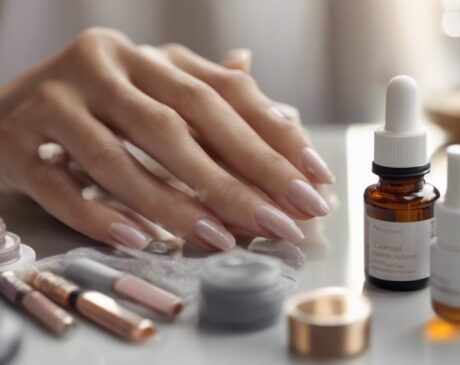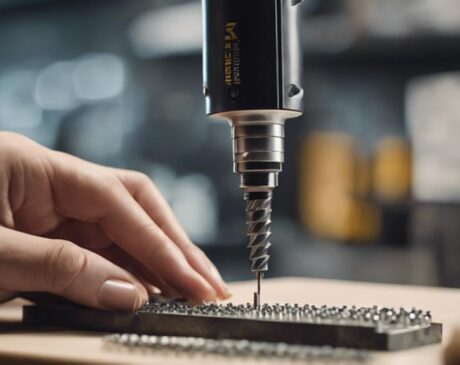Why Are Fake Nails Unsanitary?
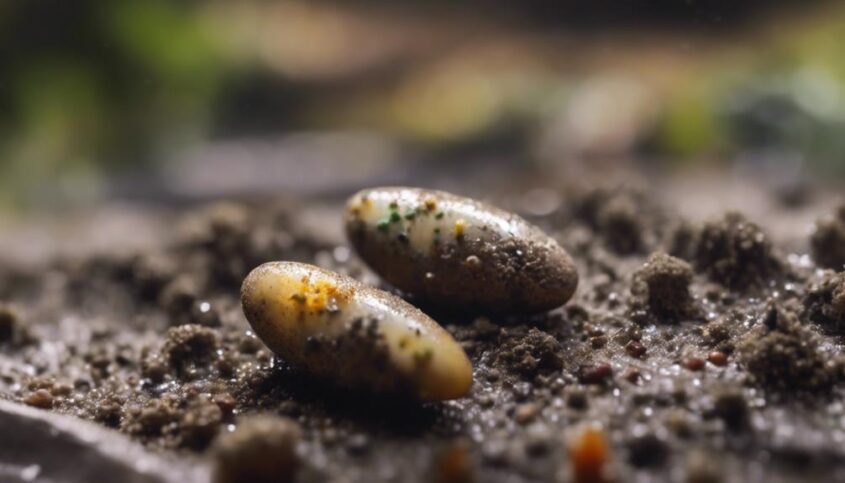
Fake nails can be unsanitary as they trap bacteria and dirt, posing health risks. They increase the risk of fungal and nail bed infections and are challenging to clean properly. These nails can also lead to allergic reactions, nail damage, and germs spreading to other surfaces. Maintaining hygiene with fake nails can be difficult. Remember, innovative solutions and proper cleaning techniques can help address these concerns effectively.
Key Takeaways
- Fake nails trap bacteria and dirt, leading to health risks.
- Increased risk of fungal and nail bed infections due to fake nails.
- Difficulty in cleaning underneath fake nails promotes bacterial growth.
- Fake nails can cause allergic reactions and damage natural nails.
- Inadequate hygiene practices with fake nails can spread germs to other surfaces.
Trapping of Bacteria and Dirt
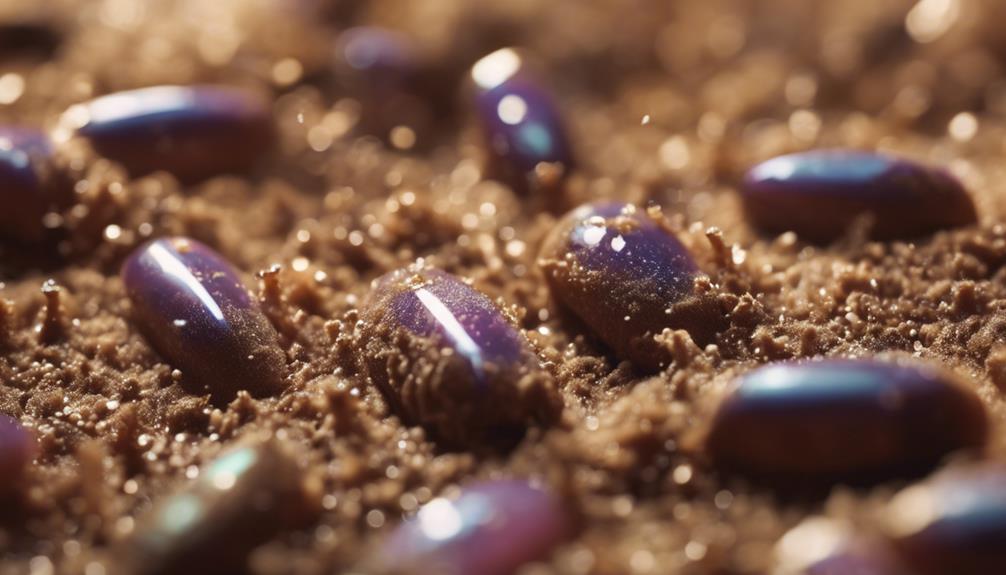
Fake nails, often acrylic or gel extensions, have been known to exacerbate hygiene concerns due to their ability to harbor bacteria and trap dirt beneath their surface. This trapping of bacteria and dirt can lead to potential health risks for individuals who opt for these trendy nail enhancements. The crevices between the fake nail and the natural nail bed create an ideal environment for bacteria to thrive, increasing the risk of infections.
Innovations in the nail industry have attempted to address these sanitation issues by introducing techniques and products that promote healthier nail practices. For instance, some salons now offer breathable fake nails that allow air and moisture to pass through, reducing the risk of bacterial growth. Additionally, advancements in nail glue formulations aim to create a stronger bond between the fake nail and the natural nail, minimizing the chances of dirt accumulation.
Risk of Fungal Infections
Due to the nature of fake nails, particularly acrylic or gel extensions, individuals who use them may face an increased risk of fungal infections. The snug fit of fake nails creates an ideal environment for moisture to become trapped between the natural nail and the artificial extension. This trapped moisture, combined with the warmth typically found beneath fake nails, provides a breeding ground for fungi to thrive. Fungal infections such as onychomycosis, commonly known as nail fungus, can lead to thickened, discolored, and brittle nails. Moreover, the process of applying and removing fake nails can sometimes cause small injuries to the nail bed, further increasing susceptibility to fungal infections.
Innovations in fake nail technology aim to address these concerns by promoting breathable materials and improved application techniques that reduce the risk of fungal infections. Nevertheless, individuals who opt for fake nails should remain vigilant about proper nail hygiene and seek professional advice if they suspect a fungal infection. By staying informed and proactive, fake nail enthusiasts can enjoy their fashionable extensions while minimizing the risk of fungal complications.
Increased Risk of Nail Bed Infections
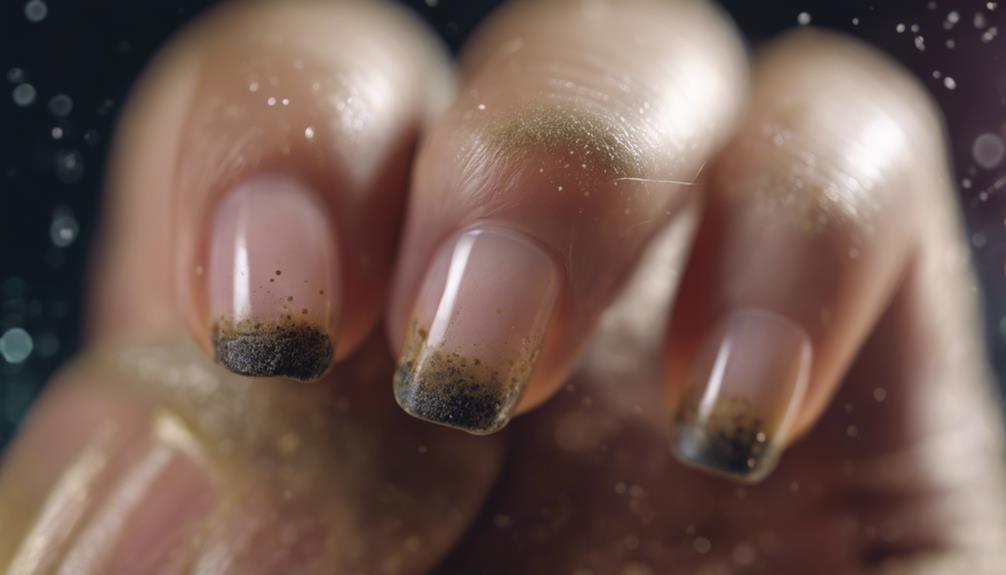
Individuals who regularly wear fake nails may face an increased risk of nail bed infections due to the potential for bacteria to thrive in the enclosed space between the natural nail and the artificial extension. The snug fit of fake nails creates a warm and moist environment that is conducive to bacterial growth, increasing the likelihood of infections. The presence of moisture and trapped debris between the natural and artificial nails provides an ideal breeding ground for harmful bacteria, potentially leading to painful and unsightly nail bed infections.
Moreover, the process of applying and removing fake nails can sometimes damage the natural nail bed, compromising its integrity and making it more susceptible to infections. This disruption of the nail bed's protective barrier further escalates the risk of bacterial invasion and subsequent infections. To mitigate these risks, individuals who opt for fake nails should pay close attention to proper hygiene practices and promptly address any signs of infection to prevent more severe complications.
Difficulty in Cleaning Underneath
The snug fit of fake nails not only poses a risk for nail bed infections but also presents a challenge in effectively cleaning underneath, potentially leading to hygiene concerns. Due to the tight seal created by the artificial nails, dirt, bacteria, and other debris can easily accumulate underneath, creating a breeding ground for harmful microorganisms. Traditional cleaning methods such as handwashing may not suffice in reaching the hidden areas beneath the fake nails, compromising overall hand hygiene. This difficulty in cleaning underneath fake nails highlights the importance of developing innovative solutions to enhance sanitation practices for individuals who choose to wear artificial nail enhancements. Technologies like ultrasonic cleaners or specialized tools designed for cleaning under fake nails could offer more effective and efficient ways to maintain cleanliness. Addressing this cleaning challenge is crucial in minimizing the risk of infections and promoting better hand hygiene practices among individuals who opt for fake nails.
Potential for Allergic Reactions
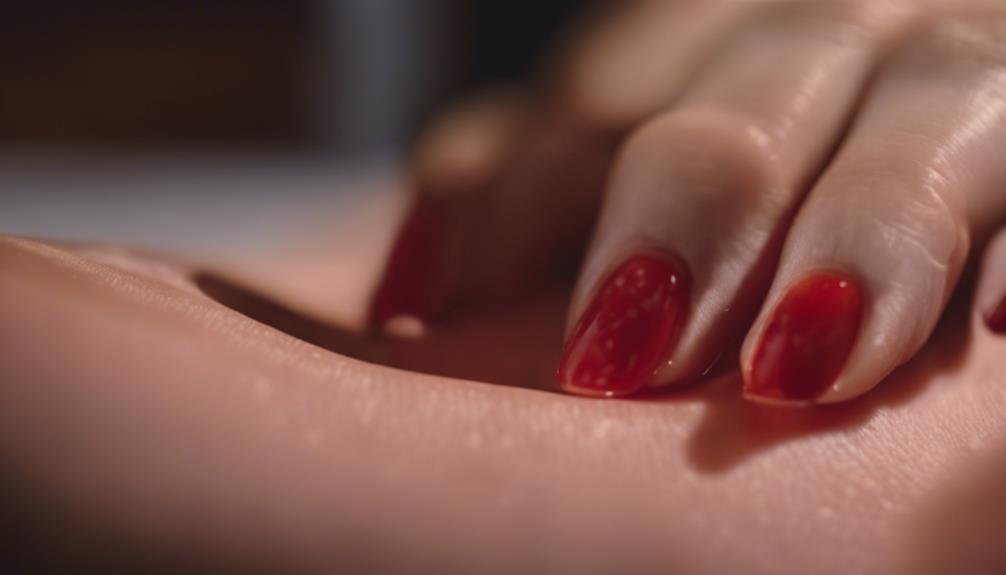
With the rise in popularity of fake nails, there is a growing concern regarding the potential for allergic reactions among wearers. These reactions can be triggered by various components of fake nails, such as the adhesives used to attach them, the materials they are made of, or the chemicals involved in their application and maintenance. Allergic reactions to fake nails can manifest as redness, swelling, itching, or even more severe symptoms like blistering or peeling of the skin around the nail area.
One common allergen found in fake nails is formaldehyde, a chemical that is used in some nail glues and acrylic nail formulations. Formaldehyde can cause contact dermatitis in sensitive individuals, leading to discomfort and skin reactions. Additionally, some people may develop allergies to other chemicals present in nail products, such as toluene or dibutyl phthalate, which are commonly found in nail polishes and treatments.
To prevent allergic reactions, individuals wearing fake nails should be aware of the ingredients in the products they use and consider opting for hypoallergenic alternatives. Regularly changing or removing fake nails can also help reduce the risk of developing sensitivities or allergies to the substances used in these products.
Nail Damage and Weakening
Excessive and prolonged use of fake nails can lead to significant nail damage and weakening over time. While these artificial enhancements provide aesthetic benefits, they may compromise the overall health of natural nails. The application and removal processes of fake nails involve harsh chemicals and physical manipulation, which can weaken the nail bed and cause brittleness. As a result, individuals who frequently use fake nails may experience thinning, peeling, and breakage of their natural nails.
Moreover, the constant presence of fake nails can create a barrier that restricts the nails from receiving essential nutrients and moisture, further contributing to their weakening. This can lead to a vicious cycle where individuals feel the need to continuously apply fake nails to mask the damage, perpetuating the issue.
To mitigate the risk of nail damage and weakening associated with fake nails, individuals should consider giving their natural nails regular breaks from artificial enhancements. Additionally, adopting a nail care routine that focuses on strengthening and nourishing the natural nails can help restore their health and resilience.
Spread of Germs to Other Surfaces
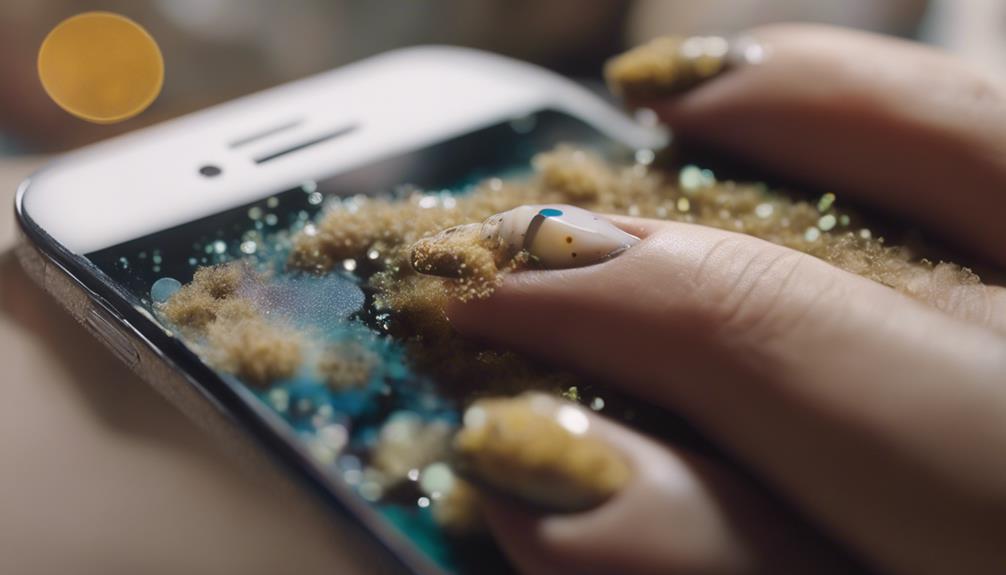
Inadequate hygiene practices associated with fake nails can facilitate the spread of germs to other surfaces. The intricate designs and extensions of fake nails create tiny spaces where dirt, bacteria, and viruses can easily accumulate. When individuals with fake nails touch surfaces, they inadvertently transfer these pathogens, increasing the risk of contamination in their surroundings. This spread of germs poses a significant concern, particularly in shared spaces like offices, schools, and public transportation where multiple people come into contact with the same surfaces.
Moreover, the length and thickness of fake nails can make it challenging to clean them thoroughly, allowing bacteria to thrive and multiply. As a result, the likelihood of spreading harmful microorganisms to commonly touched objects such as doorknobs, keyboards, and smartphones is heightened. To combat this issue, individuals with fake nails should prioritize proper hand hygiene, including regular handwashing and disinfection, to minimize the transmission of germs to other surfaces. By adopting these practices, the risk of contamination can be significantly reduced, promoting a healthier and more hygienic environment for all.
Challenges in Maintaining Hygiene
Maintaining proper hygiene with fake nails presents challenges due to the risk of harboring harmful bacteria and the difficulty in cleaning underneath and around the nails. The buildup of bacteria can pose health risks, making it crucial to address cleaning methods effectively. To combat these challenges, individuals can follow specific cleaning tips to ensure optimal nail hygiene and reduce the spread of germs.
Hygiene Risks With Nails
A crucial aspect of nail care involves diligently upholding high standards of sanitation to prevent potential hygiene risks. Failure to maintain proper hygiene practices with nails can lead to various issues such as fungal infections, bacterial growth, and skin irritation. The accumulation of dirt, bacteria, and other contaminants under or around fake nails can create a breeding ground for harmful microorganisms. Neglecting to clean and disinfect nails regularly can result in hygiene-related complications that may impact overall health. Innovations in nail care products, such as antibacterial coatings and disposable nail kits, aim to address these hygiene concerns effectively. By staying informed about the latest advancements in nail hygiene and actively implementing sanitary measures, individuals can enjoy beautiful nails without compromising on cleanliness.
Bacterial Buildup Concerns
Neglecting proper sanitation practices with fake nails can exacerbate concerns regarding bacterial buildup, presenting significant challenges in maintaining optimal hygiene levels. The crevices between the artificial nail and natural nail bed create an ideal environment for bacteria to thrive and multiply. Bacterial buildup not only poses health risks to the individual wearing the fake nails but also increases the likelihood of transferring harmful pathogens to others. Innovative solutions such as incorporating antimicrobial materials into fake nail designs or using disposable fake nails can help mitigate these concerns. Regularly cleaning and disinfecting fake nails, along with practicing good hand hygiene, are essential in preventing bacterial overgrowth and maintaining a hygienic environment. By addressing bacterial buildup concerns, individuals can enjoy the aesthetic benefits of fake nails without compromising their health.
Cleaning Challenges and Tips
Effective cleaning of fake nails presents a series of challenges that necessitate careful attention to detail and adherence to proper hygiene practices. The intricate designs and tight spaces between the fake nails and natural nails create hiding spots for bacteria and dirt, making thorough cleaning essential. To combat these challenges, consider using a soft-bristled brush to gently scrub under and around the fake nails regularly. Soaking the nails in warm, soapy water can help loosen debris before cleaning. Additionally, using a disinfectant specifically designed for fake nails can aid in killing bacteria and maintaining hygiene. Remember to dry the nails thoroughly to prevent moisture buildup, which can lead to bacterial growth. By incorporating these tips into your cleaning routine, you can effectively maintain the hygiene of your fake nails.
Frequently Asked Questions
Can Fake Nails Cause Damage to the Natural Nails Underneath?
Wearing fake nails can sometimes lead to damage on the natural nails underneath, especially if not properly applied or removed. Over time, excessive use may weaken the natural nails, making them prone to breakage.
How Likely Are Fake Nails to Spread Germs to Other Surfaces?
Fake nails can harbor germs and bacteria, increasing the likelihood of spreading them to other surfaces. Regular hand washing and proper nail hygiene practices are essential to minimize the risk of germ transmission from fake nails.
Are There Any Specific Challenges in Maintaining Hygiene With Fake Nails?
Maintaining hygiene with fake nails presents challenges due to the increased surface area where dirt and bacteria can accumulate. Proper cleaning techniques and regular maintenance are crucial to mitigate potential health risks associated with fake nails.
What Are Some Potential Allergic Reactions That Can Occur With Fake Nails?
Potential allergic reactions to fake nails can include contact dermatitis, redness, swelling, itching, or blistering. It is essential to be mindful of the materials used in nail products and to test for any sensitivities before application.
How Can Fake Nails Weaken the Natural Nails Over Time?
Fake nails can weaken natural nails over time due to the application process involving filing, gluing, and removal techniques that can cause damage. Continued wear without breaks can hinder nail health, leading to potential weakening.

